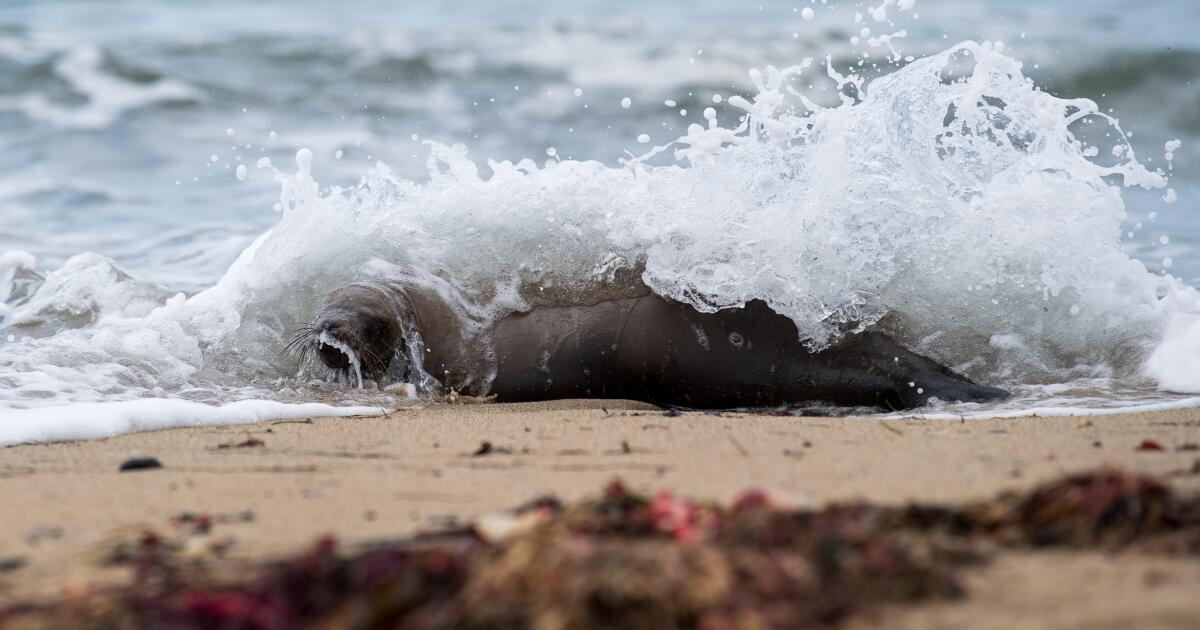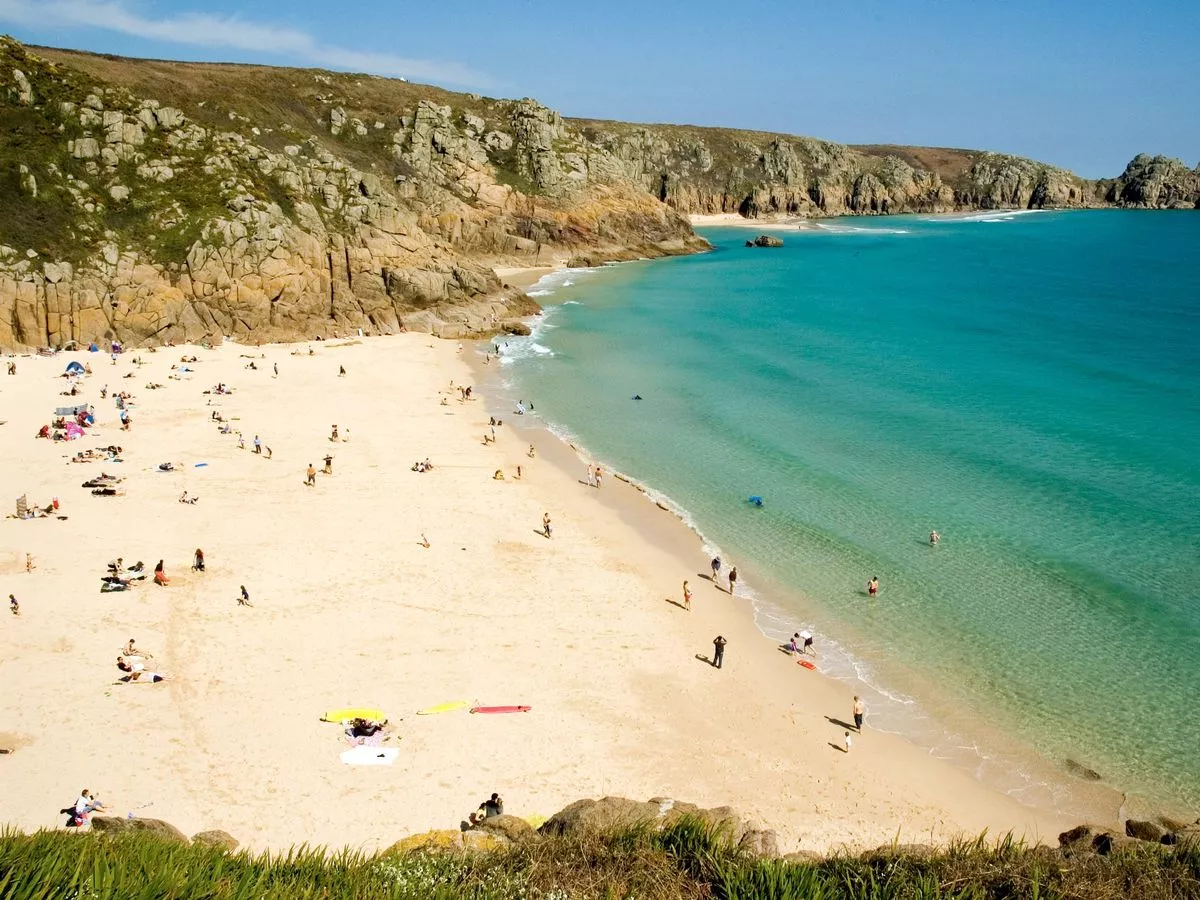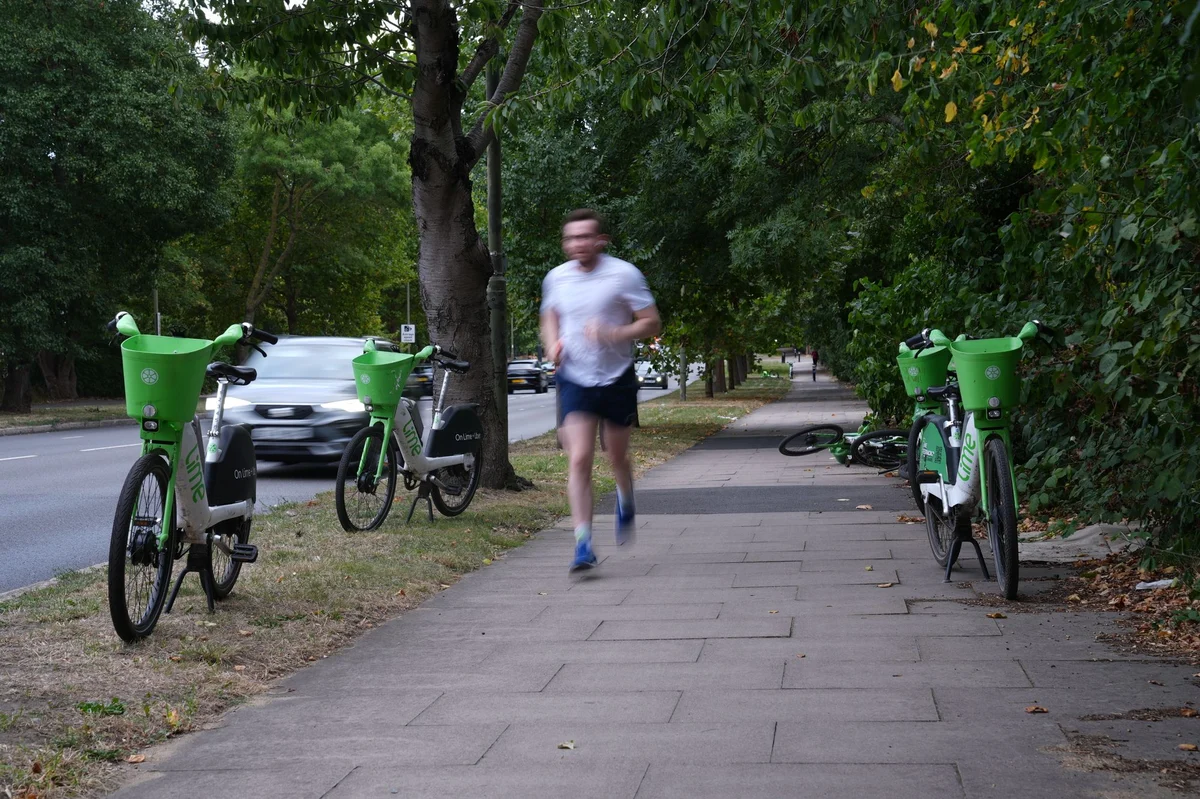
On a spit of sand 12 miles north of Santa Cruz, a small, emaciated sea lion lay on its side. The only sign of life was the deep press of its flippers against its belly, relaxing for a few seconds, then squeezing again.
“That’s a classic sign of lepto,” said Giancarlo Rulli, a volunteer and spokesperson with the Marine Mammal Center, pointing to the young animal’s wretched self-embrace. The corkscrew-shaped bacteria, leptospirosis, causes severe abdominal pain in sea lions by damaging their kidneys and inflaming their gastrointestinal tracts. “They hold their stomach just like that. Like a sick child with a bellyache,” he said.
Since the end of June, officials say more than 400 animals have been reported stranded or sickened along the Central Coast beaches. More than two-thirds of them have died, Rulli said. Hundreds more probably were washed away before anyone spotted them, or died at sea.
The historically large and long bacterial outbreak is adding to an already devastating death toll for the seals, sea lions, dolphins, otters and whales who live in and migrate through the state’s coastal waters.
There are the poisonous algal blooms off the central and southern coasts. There are massive changes in food availability and distribution across the Pacific. And there are growing casualties from ship strikes, record numbers of entanglements in rope and line, and a new heat blob forming in the eastern Pacific. This year may be remembered as one of the gravest for marine mammals on record. Or, more worryingly, a sign that our ocean environment is changing so drastically that in some places and seasons, it’s becoming uninhabitable for the life it holds.
The network of volunteers who tend to stranded marine life is running ragged, said Rulli, averaging five rescue calls a day. “It’s been a brutal year. … It’s been hard on the animals. It’s been traumatic for the volunteers. It’s a lot.”
Whether all of these pressures and changes are related, or are completely separate phenomena happening at the same time in the same place, scientists don’t know.
“We’re trying to build our understanding of how ocean conditions relate to the occurrence of disease. But it’s a work in progress. And the world is changing quickly underneath our feet,” said Jamie Lloyd-Smith, an ecologist and evolutionary biologist at UCLA.
The first outbreak of leptospirosis in sea lions was reported along the West Coast in 1970, said Katie Prager, a disease ecologist at UCLA. By the 1980s, the Marine Mammal Center and others were keeping comprehensive records. They found that the bacterium tended to cause small, annual outbreaks that started in late summer and lasted just a month or two.
Every three to five years, however, they’d see a large outbreak in which scores of animals got sick. In 2011 and 2018 during the last two big outbreaks, roughly 300 animals were rescued, Rulli said.
Lloyd-Smith and others say such leptospira-booms are probably driven by typical population dynamics — such as when a large enough cohort of never-exposed young animals get it and pass it around on beaches where the highly social animals congregate.
But this year, the outbreak started more than a month earlier than usual, and the number of sickened animals has surpassed any previously recorded outbreak.
This year seems deadlier, too, Rulli said. Leptospirosis typically kills some two-thirds of the animals it sickens. It’s only an impression at this point, but this year it seems to him like even more.
Looking at the sick pup on the Davenport beach, Rulli shook his head and said the animal was about as sick as he’d ever seen.
The little sea lion died soon after it was taken to the Marine Mammal Center’s Castroville clinic, noted on a white board only as “Nameless Carcass.”
Why this year’s outbreak has been so devastating is not clear.
Lloyd-Smith and Prager said the leptospira species that affects sea lions is also found in some terrestrial mammals — such as raccoons, skunks and coyotes. Whether these scavengers are introducing new strains of the bacteria to sea lions on beaches, or the other way around, is not known. Nor is the bacteria’s natural reservoir — an area of research Lloyd-Smith is actively pursuing.
On a floating dock below the Capitola wharf, two groups of sea lions were lying down in the unusually sticky, humid air of a recent late-September afternoon. Seven were spooning one another in two small clusters — their flippers outstretched on each other’s bodies, their heads resting on their neighbors’ tummies or backs.
One rested at a distance from the others. It was the one someone had called in about.
For the rescue team, it was the third stop of the day, and it would be another tough one. A quick scan of the eight sea lions showed that another also looked unwell, her hip bones and vertebrae jutted jarringly underneath her blubberless skin.
The rescuers tried to catch the solo sea lion by nabbing her with a large fishing net, but she managed to squirt out of it. Veteran rescuers Jeremy Alcantara and Patrick McDonald regrouped with the others up on the wharf. They decided they’d try for the bony sea lion sunbathing with her friends.
Since April, the state’s stranding network of volunteer rescue crews has been responding daily to calls about sick sea lions, dolphins, whales, sea turtles and birds.
On the Southern California coast, there was a historic domoic acid outbreak that sickened more than 2,100 animals.
In the Bay Area, there was a record-breaking number of dead gray whales.
And from San Diego to Crescent City, they saw an off-the-chart number of whale entanglements — humpbacks and gray whales caught in the ropes and lines of the region’s commercial fisheries.
Now there’s worry that a growing marine heat wave in the Pacific could make things even worse — just as the Trump administration has threatened to pull funding from the National Oceanic and Atmospheric Administration, which provides financial help, research and oceanic data for the beleaguered animal crews.
“Fortunately, these volunteers don’t give up,” Rulli said. “They’re completely dedicated.”
Alcantara and McDonald descended the stairs from the wharf to the floating dock, taking roughly 10 minutes to quietly approach the sunbathing sea lions. The skinny one they were after had her flippers tucked tight against her belly.
A curious gull watched from the water. Tourists and locals gawked from above.
With a swoop of the net they caught her, carried her up the ramp to the wharf, quickly maneuvered her into a crate and then the back of an air-conditioned van that drove her to Castroville, where she was pumped with antibiotics and fluids.
She’s now at the center’s headquarters hospital in Sausalito, said Rulli. But “has not been receptive to offers of sustainable ground herring.”



